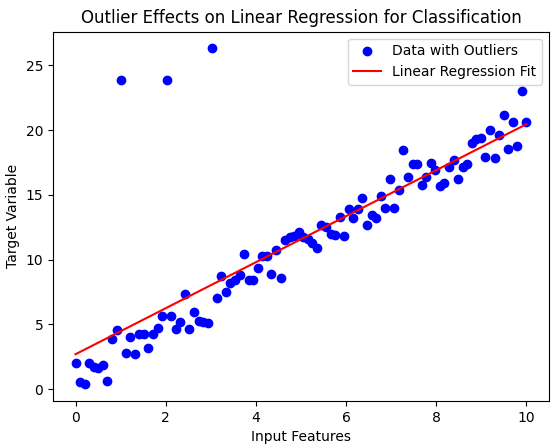Linear Regression versus Classification - Python for Integrated Circuits - - An Online Book - |
||||||||
| Python for Integrated Circuits http://www.globalsino.com/ICs/ | ||||||||
| Chapter/Index: Introduction | A | B | C | D | E | F | G | H | I | J | K | L | M | N | O | P | Q | R | S | T | U | V | W | X | Y | Z | Appendix | ||||||||
================================================================================= In general, linear regression is not a good algorithm for classification because linear regression is primarily designed for solving regression problems, not classification problems. While both regression and classification are types of supervised machine learning tasks, they have different objectives and require different approaches. Some reasons why linear regression is not suitable for classification are:
To perform classification tasks effectively, it's better to use algorithms specifically designed for classification, such as logistic regression, decision trees, random forests, support vector machines (SVMs), probabilistic algorithm, or deep learning models like neural networks. These algorithms are better suited to handle the discrete nature of classification problems and can model complex decision boundaries more effectively than linear regression.
============================================
|
||||||||
| ================================================================================= | ||||||||
|
|
||||||||
